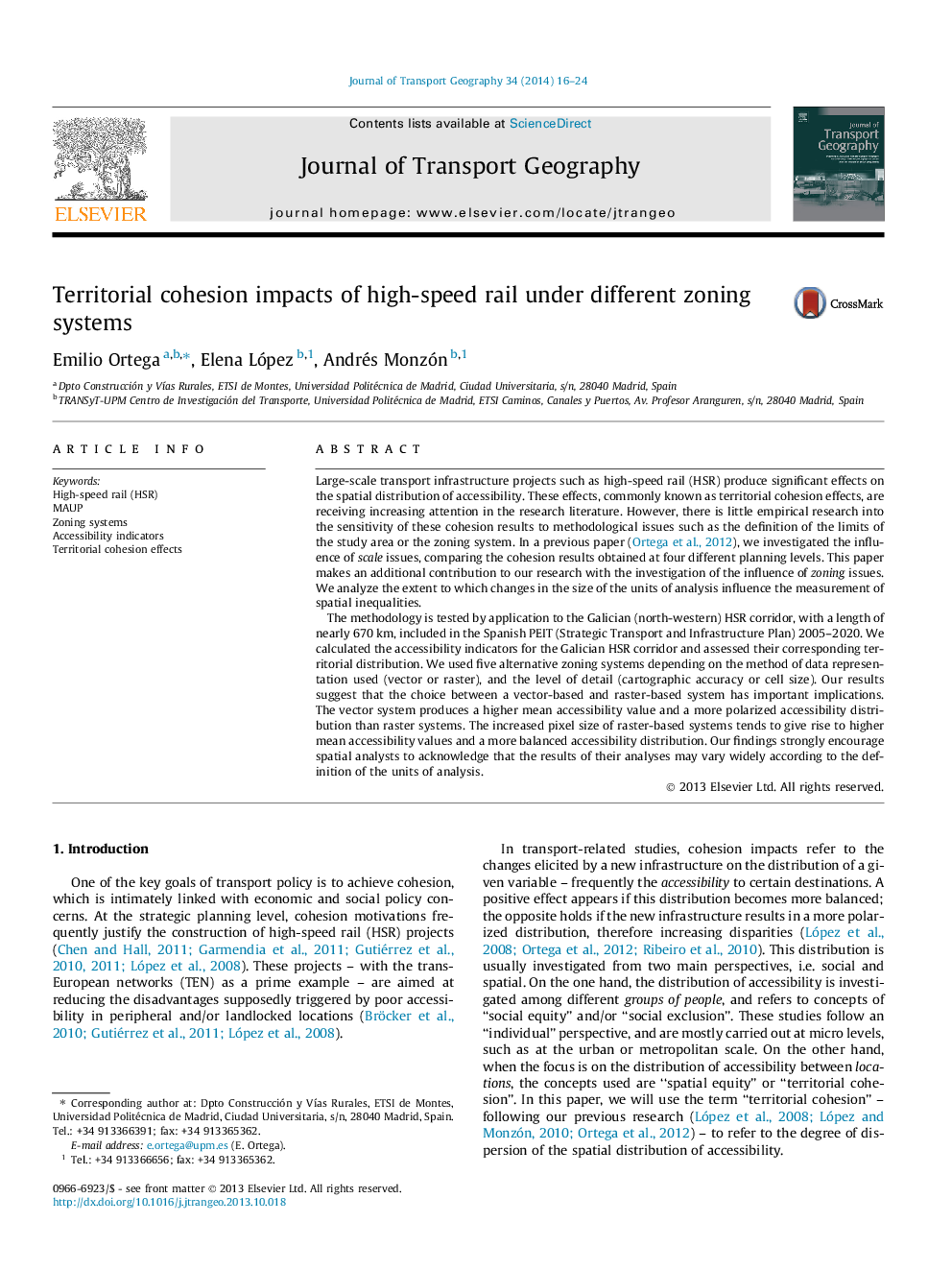| Article ID | Journal | Published Year | Pages | File Type |
|---|---|---|---|---|
| 7486191 | Journal of Transport Geography | 2014 | 9 Pages |
Abstract
The methodology is tested by application to the Galician (north-western) HSR corridor, with a length of nearly 670Â km, included in the Spanish PEIT (Strategic Transport and Infrastructure Plan) 2005-2020. We calculated the accessibility indicators for the Galician HSR corridor and assessed their corresponding territorial distribution. We used five alternative zoning systems depending on the method of data representation used (vector or raster), and the level of detail (cartographic accuracy or cell size). Our results suggest that the choice between a vector-based and raster-based system has important implications. The vector system produces a higher mean accessibility value and a more polarized accessibility distribution than raster systems. The increased pixel size of raster-based systems tends to give rise to higher mean accessibility values and a more balanced accessibility distribution. Our findings strongly encourage spatial analysts to acknowledge that the results of their analyses may vary widely according to the definition of the units of analysis.
Related Topics
Life Sciences
Environmental Science
Environmental Science (General)
Authors
Emilio Ortega, Elena López, Andrés Monzón,
